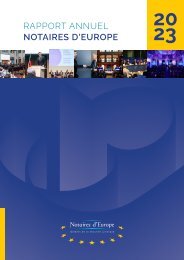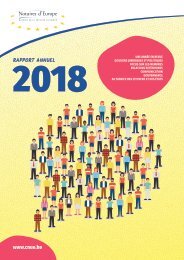CNUE - THE FIGHT AGAINST MONEY LAUNDERING
THE FIGHT AGAINST MONEY LAUNDERING - AN INTERNATIONAL COMBAT, A EUROPEAN CHALLENGE Money laundering is a multifaceted phenomenon. First of all, it is neither static nor temporary: it is constantly evolving, finding new resources in an ever-increasing financial globalisation and the evolution of technology. It is also a phenomenon that is inherently transnational, not only disregarding borders, but using them to blur the trail of successive financial transactions across the globe and obstructing the course of justice. Finally, it is a phenomenon that is on the increase. According to an estimate by the Financial Action Task Force (FATF), the annual volume of money laundering operations is estimated at between 2 and 5% of global GDP.
THE FIGHT AGAINST MONEY LAUNDERING - AN INTERNATIONAL COMBAT, A EUROPEAN CHALLENGE
Money laundering is a multifaceted phenomenon. First of all, it is neither static nor temporary: it is constantly evolving, finding new resources in an ever-increasing financial globalisation and the evolution of technology. It is also a phenomenon that is inherently transnational, not only disregarding borders, but using them to blur the trail of successive financial transactions across the globe and obstructing the course of justice. Finally, it is a phenomenon that is on the increase. According to an estimate by the Financial Action Task Force (FATF), the annual volume of money laundering operations is estimated at between 2 and 5% of global GDP.
Create successful ePaper yourself
Turn your PDF publications into a flip-book with our unique Google optimized e-Paper software.
Following the listing, banks and other
entities falling within the scope of EU antimoney
laundering rules are required to apply
enhanced vigilance for financial transactions
involving customers and financial institutions
from these high-risk third countries, in order
to better detect suspicious capital flows.
The Commission is expected to
propose a new draft shortly in
consultation with Member States in an
effort to reach a consensus.
The Commission has developed its own
methodology for identifying high-risk
third countries, based on information
provided by the Financial Action Task Force,
supplemented by its own expertise and other
sources such as Europol. The countries
assessed meet at least one of the following
criteria:
● they have a systemic impact on the integrity
of the EU financial system;
● they are considered by the International
Monetary Fund as international offshore
financial centres;
● they have economic relevance for the EU
and strong economic links with the EU.
The 2019 list included the following 23
countries and territories: Afghanistan,
American Samoa, Bahamas, Botswana,
Democratic People’s Republic of Korea,
Ethiopia, Ghana, Guam, Iran, Iraq, Libya,
Nigeria, Pakistan, Panama, Puerto Rico,
Samoa, Saudi Arabia, Sri Lanka, Syria,
Trinidad and Tobago, Tunisia, United
States Virgin Islands, Yemen.
However, the Member States did not
agree and on 6 March 2019 rejected
the Commission’s proposal, which had,
moreover, been criticised by the United
States. The Member States argued
that the procedure for updating the list
was unclear and that it risked being
challenged in court. This position was
regretted by the European Parliament in
a resolution adopted on 14 March. The
Commission had to propose a new draft
in consultation with Member States in
an effort to reach a consensus. The draft
was finally released on 7 May 2020.
18
















